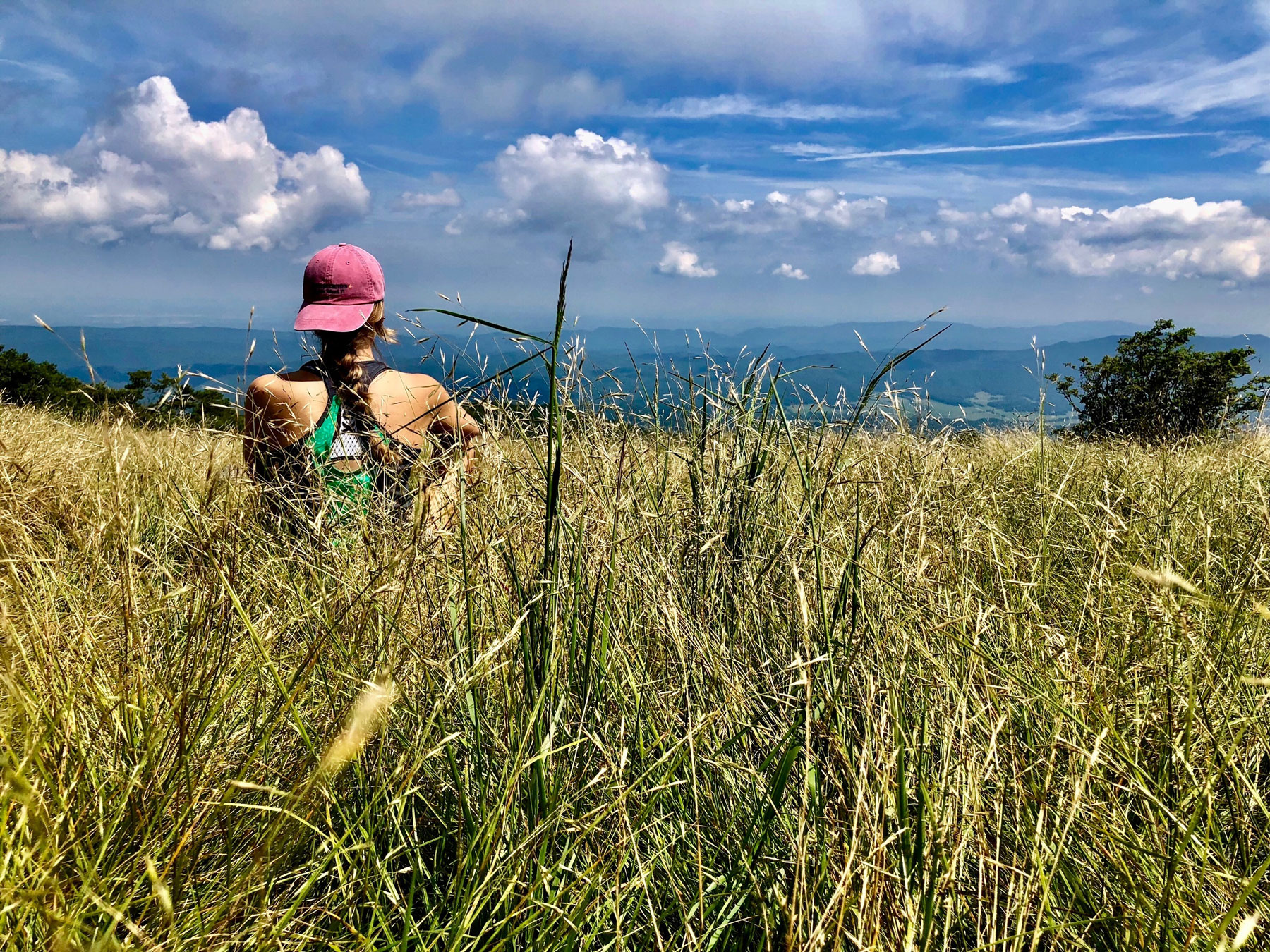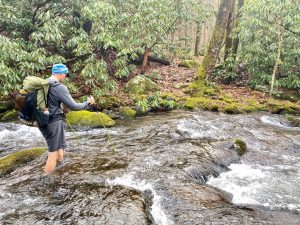
Imagine yourself in the open field atop Andrews Bald on a warm summer day. The shifting clouds form endless shapes, and an impromptu Rorschach test ensues with your hiking partners as you debate whether one looks like a fire-breathing dragon or a steam engine.
As you pack up your lunch to hike back to the Clingmans Dome parking area, you hear rumbles of thunder. The sounds grow louder at an alarming rate, accompanied by flashes of lightning illuminating the now-ominous clouds above you.
Would you know how to handle this potentially dangerous scenario? Do you run for the trees, or is it better to stay in the meadow as low to the ground as possible?
It’s easier (and far more fun) to pull out a map and plan where to hike and what snacks to bring than it is to consider what might go wrong and how to mitigate certain situations. However, these considerations are some of the most important things to research before entering the backcountry.

With six years under my belt as a member of the Haywood County Search and Rescue Team, preventing emergencies in the backcountry has become a passion of mine. To help get you started with safety research, I’ve put together some common scenarios hikers might face in summer and how to minimize the risks they present.
In this first part, we’ll cover thunderstorms and water. In part two, we’ll look at wildlife and getting lost. In both, I’ll offer additional resources to help you prepare.
Thunderstorms
Seek shelter when there is less than a 25-second interval between claps of thunder. Avoid standing under a solitary tree, especially if it’s tall. Also, avoid tall peaks, overhanging rocks, and exposed cliffs. Instead, seek shelter in a stand of mostly uniform-height trees at a lower elevation, if possible.
Once in a safe location, and if the lightning strikes are 15 seconds apart or less, assume the “lightning position” by keeping your feet close together and squatting while avoiding touching other parts of your body. Spread out from others at least 20 feet.
So, in our Andrews Bald scenario, your best plan of action would be to quickly leave the bald’s exposed location. If the lightning strikes are 15 seconds apart or less, assume the “lightning position” in an area on the Forney Ridge Trail with mostly uniform trees.
Water
“Those who enter the water to fish, boat, float, wade, or swim should take to heart the adage that still waters run deep, but, as statistics bear out, the churning rapids and plunging falls are significantly more perilous,” writes David Brill in Into the Mist: Tales of Death and Disaster, Mishaps and Misdeeds, Misfortune and Mayhem in Great Smoky Mountains National Park, published by GSMA. Drowning is one of the leading causes of death each year in the park, yet most water-related tragedies are avoidable.
To avoid a dangerous situation, do not scale rocks beside waterfalls or stand anywhere near the top of one. Swimming at the base of a waterfall is also extremely hazardous. Watch children closely around any body of water, and life jackets are required for children aged thirteen and younger if they are tubing in park streams.
When approaching unbridged streams, wear shoes and do not cross them if they give you pause. Reference the Great Smoky Mountains Backcountry Trail Map (sometimes referred to as the “$1 map”), which is sold online and in park visitor centers, for a list of the most hazardous unbridged stream crossings in the park before heading out on a hike. This is especially important if it has rained recently.
Be mindful of rising water levels in creeks and streams before crossing them or recreating near them if it’s raining. Seek higher ground if the water is rising quickly.
This video provides more information about water safety in the park.
Keeping Safe on Your Summer Hikes
This trip planning worksheet created by Backcountry Unit Search and Rescue, a search and rescue team that works in the park, is something you should print and fill out before every hike. If you do not return home as planned, it is invaluable information to emergency services and can lead to you being found much quicker.
Stay tuned for part two of this series for some tips on wildlife and getting lost.
For more information about hiking safely in the park, this article from GSMNP is an excellent resource. Also, if you’d like to read tales of search and rescue operations in the park, check out Into the Mist by David Brill and my book, Chasing the Smokies Moon.
Subscribe to get the latest posts sent to your email.
The Great Smokies Welcome Center is located on U.S. 321 in Townsend, TN, 2 miles from the west entrance to Great Smoky Mountains National Park. Visitors can get information about things to see and do in and around the national park and shop from a wide selection of books, gifts, and other Smokies merchandise. Daily, weekly, and annual parking tags for the national park are also available.